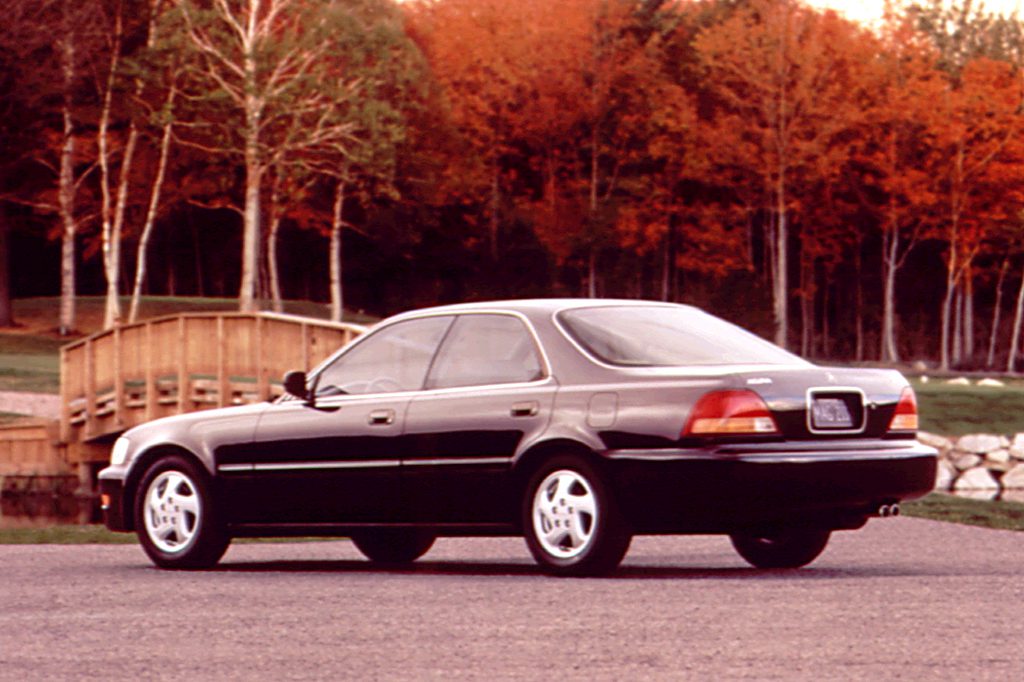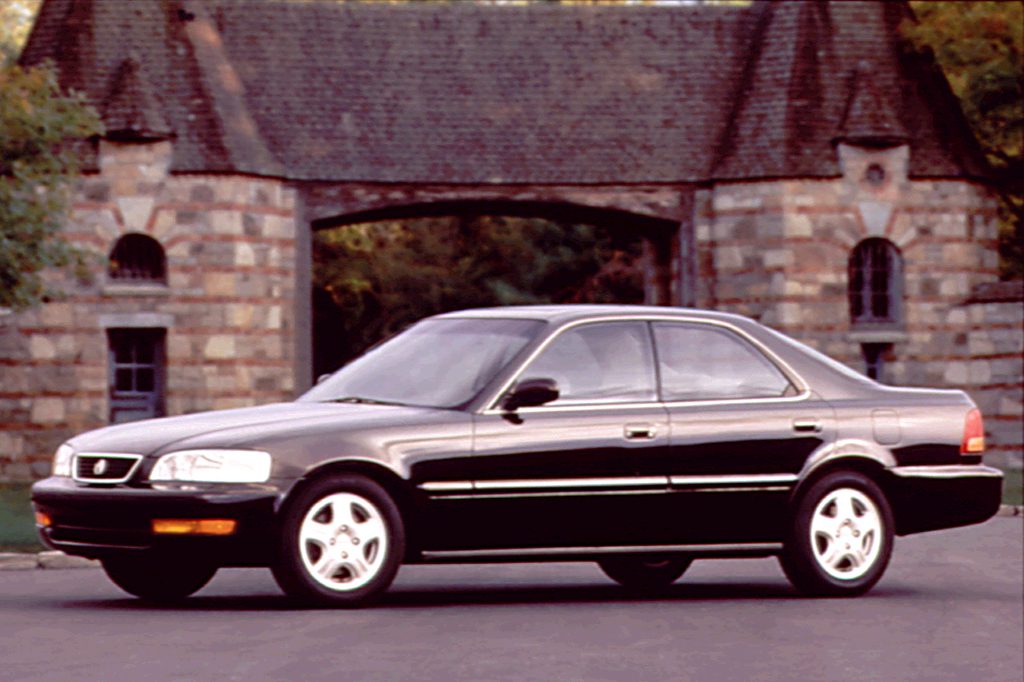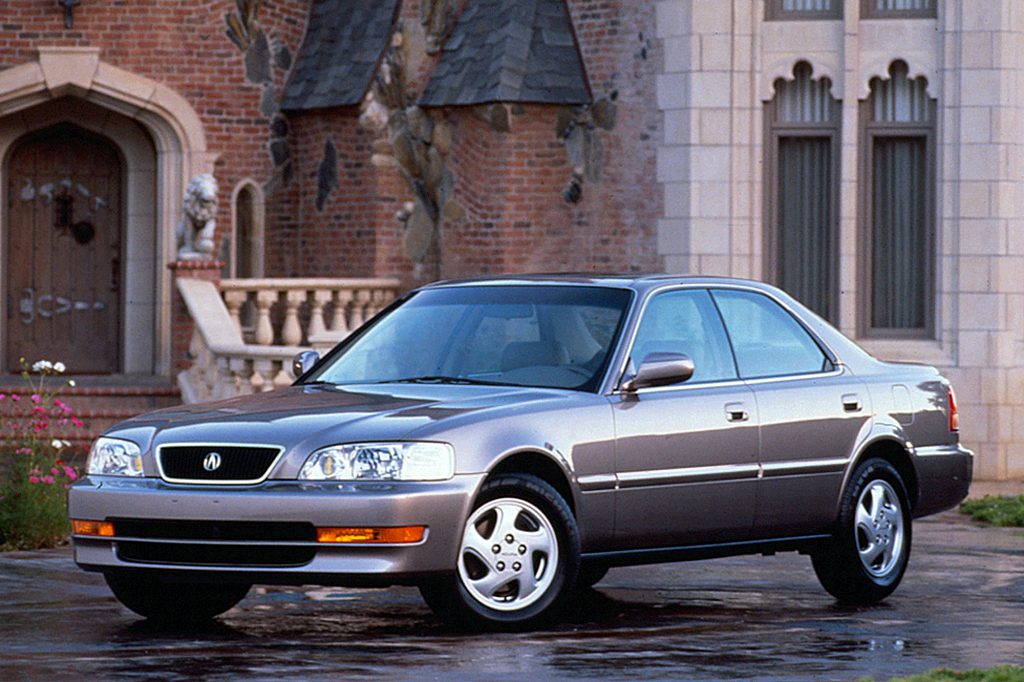| Premium midsize car; Built in Japan |
|
|
| Good condition price range: $1,500 – $3,200* |

1996 Acura 2.5TL

1996 Acura 3.2TL

1996 Acura 2.5TL

1997 Acura 3.2TL

1997 Acura TL interior
| Pros: |
|
| Cons: |
|
Although these TL sedans are well-constructed, pleasant, and better than the previous Vigor in every way, they still fail to overshadow the competition in the midluxury league.
Overview
Redesigning of the in-between sedan (previously called Vigor) from Honda’s luxury division brought slightly larger dimensions and also something new: an available V6 engine. At 191.5 inches overall, the TL fits right in between the older Vigor and the Legend sedan. Dual airbags were standard, along with antilock brakes, automatic climate control, cassette and CD players, and power windows and door locks. Leather seating was standard in the more costly 3.2TL with its V6 engine and optional in the five-cylinder 2.5TL. A firmer suspension went into the 2.5TL, which was marketed as the sportier of the two. The 2.5TL went on sale in spring of 1995, but the 3.2TL was delayed until fall of that year, due to a trade dispute with Japan.
Yearly Updates
| 1997 TL The V6-powered 3.2TL gained a standard power moonroof for 1997, and all models got variable-speed intermittent wipers. The 5-cylinder 2.5TL added new alloy wheels. |
| 1998 TL Little changed for 1998 except for the addition of some standard equipment to the 2.5TL. This car was completely redesigned for 1999, and production shifted from Japan to the United States. |
